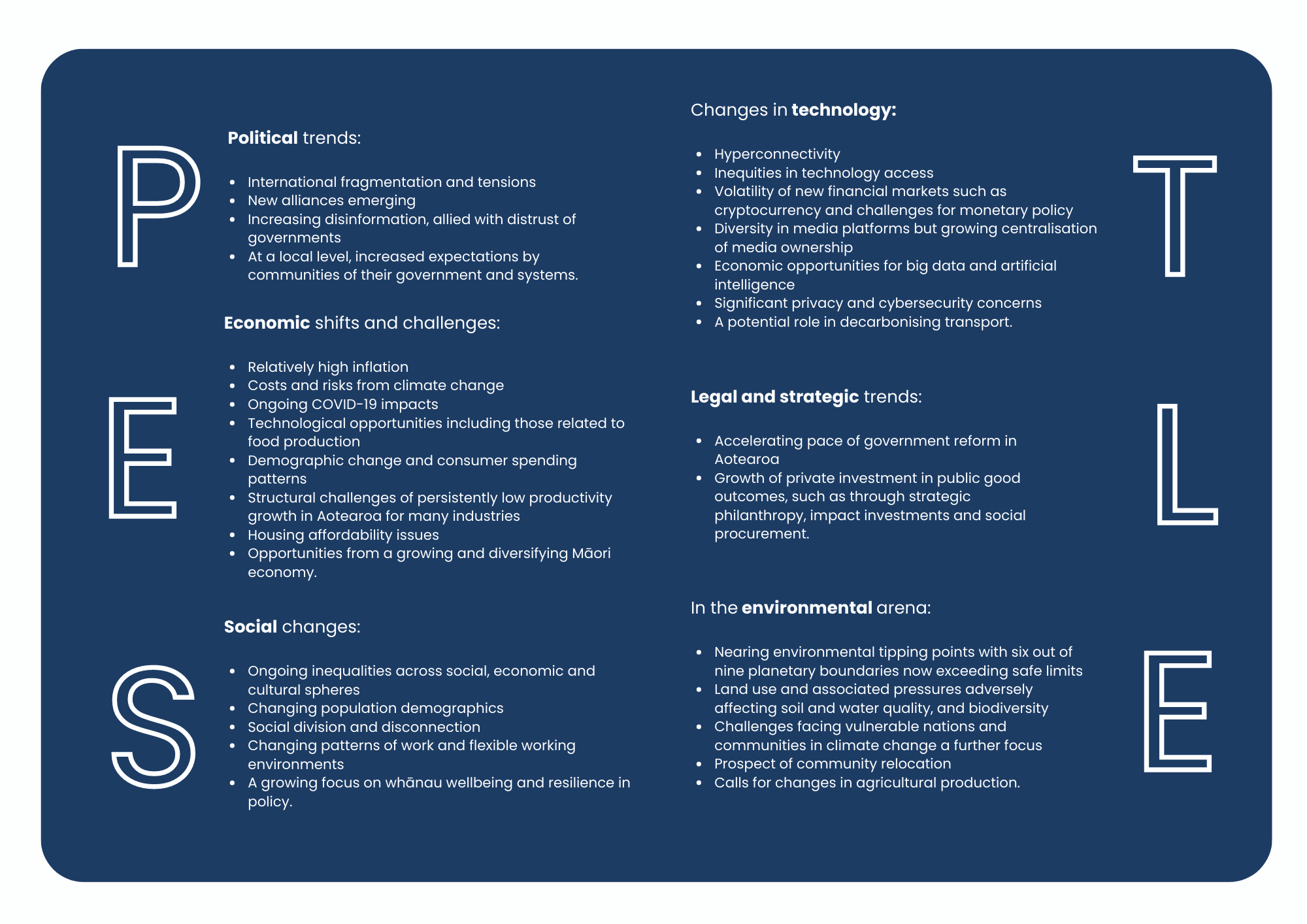Global trends and regional implications: Exploring trends for the Waikato Region
By Georgia Parslow and Adrian Field
The Waikato is a diverse region, rich with natural resources, and significant to the ecology and economy of Aotearoa. At the same time, the region is not immune from the global forces and winds of change that frequently buffet its development.
To support the Waikato Regional Council plan, and prepare for the future, Dovetail was commissioned to explore the trends and major events that could impact the region both locally and globally. The work was commissioned to inform the update of the council’s strategic direction, and to provide a resource of value to others in the Waikato region for their planning purposes.
We worked collaboratively with council staff and councillors to explore the national and global drivers of change that will inevitably affect the Waikato region. These are national and global events, patterns, and policies that are shaping us worldwide, and include the following:
The global economy is facing multiple stressors.
Many of these stressors are defined by the ongoing impacts of the COVID pandemic.
Climate action is increasingly urgent, yet is just one of many environmental limits that we are crossing.
Geopolitical instability is threatening the established global systems and networks.
Advances in technology continue to change how we live and interact.
Social and demographic change reveals many inequities, yet which if addressed can offer long-term benefits for all.
Te ao Māori is a growing feature in our economic, social, and cultural development.
These forces of change create global patterns and trends, which we grouped into political, economic, social, technological, environmental, and legal (PESTLE) trends. A summary of these trends is displayed below.
Working with our regional council partners, seven strategic response themes were highlighted, pictured below. Alongside these, we identified potential areas for action by national, regional and local government, and partners in the private, philanthropic and community sectors.
Looking to the future requires acknowledging that multiple plausible futures are possible, each affected by the interplay of historic decisions and conditions, actions we take now, and new conditions that emerge. But in acknowledging this, we offered three aspirational future scenarios for 2032, offering both pathways and potential challenges that could arise if we fail to act now:
A resilient and sustainable region – In response to global warming, changing weather systems, water availability, and other environmental drivers that threaten the decline of natural ecosystems and accelerate extreme weather events. This imagined future requires a move toward a diversified and sustainable economic base and environment, as well as a low-carbon economy.
An innovation leader – In response to increased hyperconnectivity and digitisation as well as the many opportunities afforded by clean green technology and biotechnology. Without action, the region faces an even larger digital divide as some segments of society lag behind, and the region's agriculture industry becomes ousted by competitive technology. This scenario requires a region skilled in biotechnology products and expertise as well as widespread provision of digital literacy and internet access.
A connected and inclusive society – In response to an aging and increasingly diverse population with higher levels of deprivation, transience, and workforce pressures, the region risks a widened future of economic disparity. A connected and inclusive future requires a strong creative sector that binds communities together, well-connected transport infrastructure, professional development opportunities, and equal access to social, health, and community services. A vibrant Māori culture and economy are also growing in the region, heeding way to new opportunities that can be leveraged.
Despite the challenges we face, we still have choices in how we choose to respond. We ended the discussion document with questions for the community to consider, to help achieve the positive sides of the scenarios discussed above, in the following areas:
Harnessing community strengths
Boosting the region’s economy
Reform that works for the Waikato region
Protecting and enhancing our environment and biodiversity
Springboarding from new technologies.
The full trends report is available from the Waikato Regional Council website. We'd like to extend our grateful thanks to all who participated, from within the regional council as well as its strategic partner network.
The project was led by Adrian Field, Emily Garden, Georgia Parslow and Adela Wypych from Dovetail, in partnership with Alicia Crocket, Debbie Goodwin, Rebecca Mills, Aaron Schiff, and Laura Sessions.


